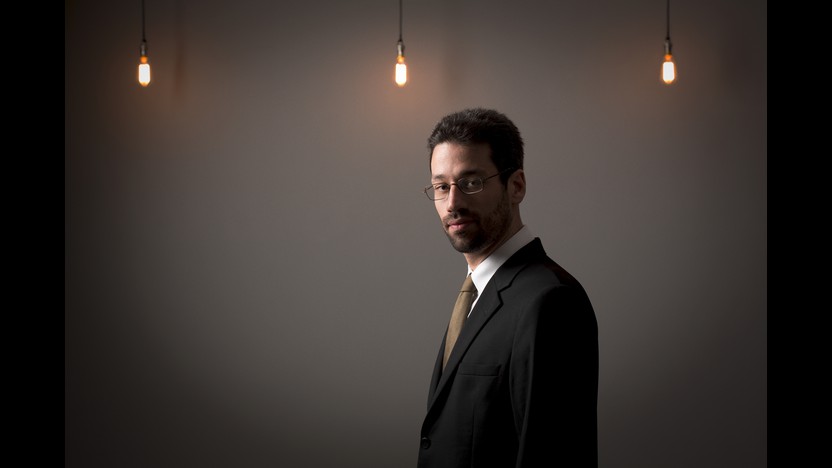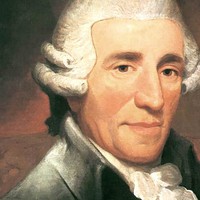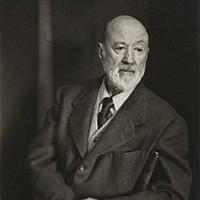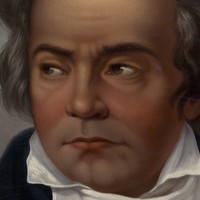Tour with Jonathan Biss: Feb 10


 Listen to Audio
Listen to Audio
When Prince Nikolaus Esterházy completed a lavish country palace in 1766, the workload for his tireless Kapellmeister, Joseph Haydn, increased dramatically. The “summer” seasons at the estate stretched to be nearly year-round, and all the while Haydn had to produce operas, provide music for church services, mount concerts and attend to any other musical needs for his insatiable patron. “In Eszterháza,” Haydn later acknowledged, “I was forced to become original.”
Some of Haydn’s most original efforts in the late 1760s and 1770s reflected an artistic trend that has been dubbed Sturm und Drang (“Storm and Stress”) after a play of the same name. From literature to painting to playwriting, artists dared to explore emotional extremes and dark discomfort; for Haydn, it led to his first symphonies constructed in minor keys.
The Symphony No. 49 was among Haydn’s earliest minor-key symphonies, and it is arguably his darkest. Instead of the usual order of movements, this F-minor symphony begins with a devastating Adagio in F minor, a practice in line with the older “church sonatas” that arranged the movements slow-fast-slow-fast. A rather fast second movement continues in the same key of F minor, its theme marked by aggressive leaps and driving counterpoint. The key persists for the Menuet third movement, at least until the contrasting trio section in F major provides the symphony’s only substantial relief. The brisk, throbbing finale confirms this symphony’s F-minor fate.
This symphony’s nickname, “The Passion,” did not come from Haydn, and there is no indication that the symphony had any religious connection other than a performance during Holy Week in 1790 that advertised “La passione.” Another early source labels this symphony “Il quakuo di bel’humore” (“The Waggish Quaker”), which puts a completely different sheen on this symphony’s musical mood. If accurate, it suggests that Haydn may have originally created this music for the stage, to accompany a popular satire featuring a pious Quaker character. In that version of history, Haydn’s over-the-top emotions would have played as comedy, not tragedy!
Aaron Grad ©2017
Non un concerto di suoni, bensì di risonanze più o meno lontane. Il solista si sottrae, nega la sua abituale supremazia, per riaffermarla su altri livelli. Non sembri questa un'idea strana, poiché sfiora e dichiara l'essenza trascendente del linguaggio/pensiero. In quanto strumento di conoscenza l'arte ci può trasformare. Così scrivevo anni addietro: "la musica è emanazione e ornamento del silenzio. La trasfigurazione sonora, l'avvicinarsi all'indistinto genera inquietudine: il non saper distinguere fra presenza e assenza." L'inquietudine dell'apprendimento è essenziale per la scoperta dell'universo, che di tutti noi è genitore.
Not a concerto of sounds, but of resonances, near and distant. The soloist withdraws, denies his usual superiority, to reaffirm it on other levels. This does not seem to be a strange idea, for it touches upon and speaks to the transcendent essence of language/thought. As an instrument of consciousness, art can transform us. As I wrote years ago: “Music is the emanation and ornamentation of silence. The transfiguration of sound, the approach of the obscure, causes anxiety: that of not knowing how to distinguish between presence and absence.” The anxiety of learning is essential for the discovery of the universe, which is parent to us all.
Translation by The Cleveland Orchestra
Salvatore Sciarrino ©2017
 Watch Video
Watch Video
Charles Ives, who trained as a composer at Yale, resigned from his post as a church organist in 1902 and embraced the professional path of an insurance man. In the following decades he amassed a fortune, composed on evenings and weekends, and produced a singular body of music that went unheard by the public for most of his life.
Ives described The Unanswered Question, composed during his early years of musical independence, as a “cosmic drama.” Time slows down with the first sustained chord, a major triad spread wide throughout the strings. The harmonies unfold in a steady string chorale, a layer Ives characterized as “The Silences of the Druids — who Know, See and Hear Nothing.” Hovering in a different tempo and key, a lone trumpet poses “The Perennial Question of Existence,” a pensive anthem of mystery and wonder. A reproachful quartet offers “The Invisible Answer,” a dissonant and unstable retort that grows increasingly agitated with each response to the unwavering question. The trumpet intones the unknowable a final time, and the hushed string chorale fades away on the same mystical chord with which it began.
Aaron Grad ©2024
 Watch Video
Watch Video
On December 22, 1808, Beethoven presented a remarkable concert in Vienna. The four-hour extravaganza featured the public debuts of the Fifth and Sixth Symphonies, the Fourth Piano Concerto and the Choral Fantasy (composed as a showstopper for the occasion), as well as miscellaneous excerpts from the Mass in C, a rendition of the concert aria Ah! Perfido and some piano improvisations. Reports from the concert bemoaned the glut of music, the hall’s frigid temperature and a sloppy orchestra; the Choral Fantasy actually ground to a complete halt, at which point Beethoven returned to the beginning and prolonged the concert even further.
The Fourth Piano Concerto left spectators particularly baffled, and the work remained largely untouched until Felix Mendelssohn revived it in 1836. The mystery begins when the piano enters alone, spinning out a simple harmonic progression marked piano dolce (quiet and sweet). Then, after the piano leaves a chord hanging that by all expectations would resolve back to a stable point of arrival, the soloist withdraws and the strings enter in a totally foreign and exotic new key. Unexpected harmonic transitions continue to crop up throughout the first movement, keeping with the quizzical mood established at the outset.
In the central Andante con moto, a single line, scored across several octaves in the strings, engages the piano in a halting tête-à-tête in E minor. The final cadence flows directly to the Rondo finale, which again starts with just a whisper. The strings take the lingering memory of the pitch E as the start of the galloping tune, stating the theme first and then passing it to the piano. The melody begins with a repeated tone and an ascending arpeggio that anchors our ears in C major—except the actual destination of this concerto is to return to its starting key of G major. Amazingly, this main theme of the finale never begins in the “proper” key, even when it appears moments from the end, adding to the sense of sleight-of-hand that defines this most elusive of Beethoven’s piano concertos.
— © Aaron Grad
Aaron Grad ©2017
Get driving directions and find nearby parking.
Find dining options close to the venue.
View seating charts to find out where you'll be seating.
SPCO concerts are made possible by audience contributions.
For exclusive discounts, behind-the-scenes info, and more:
Sign up for our email club!
